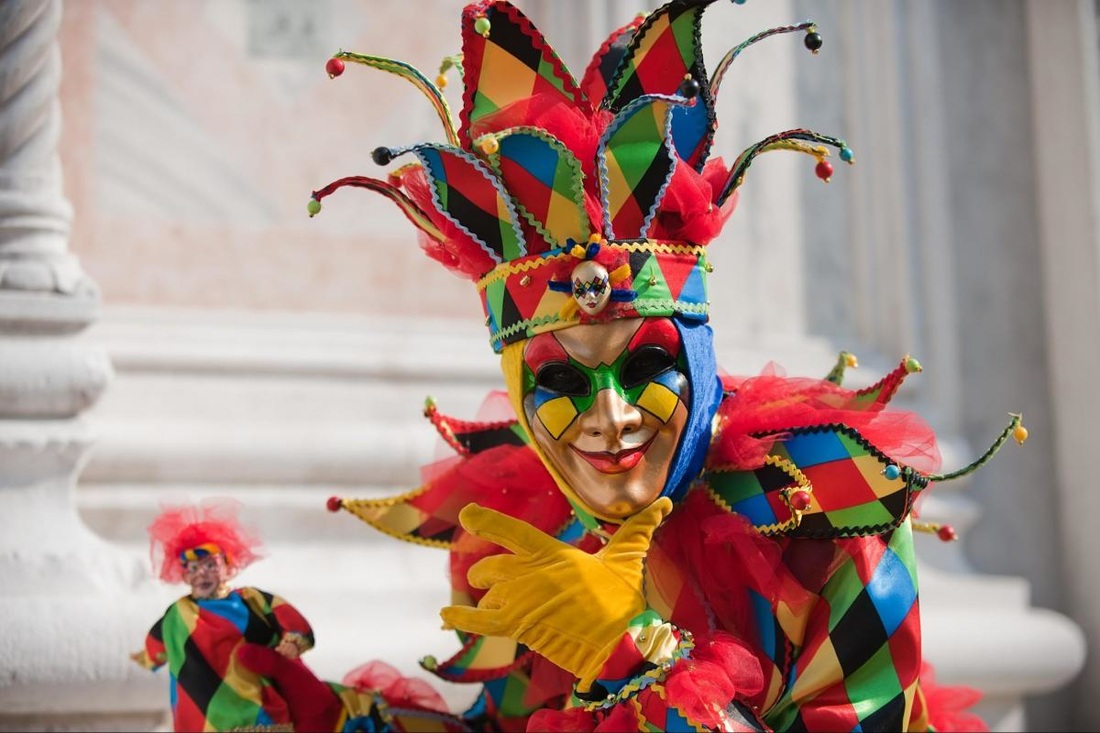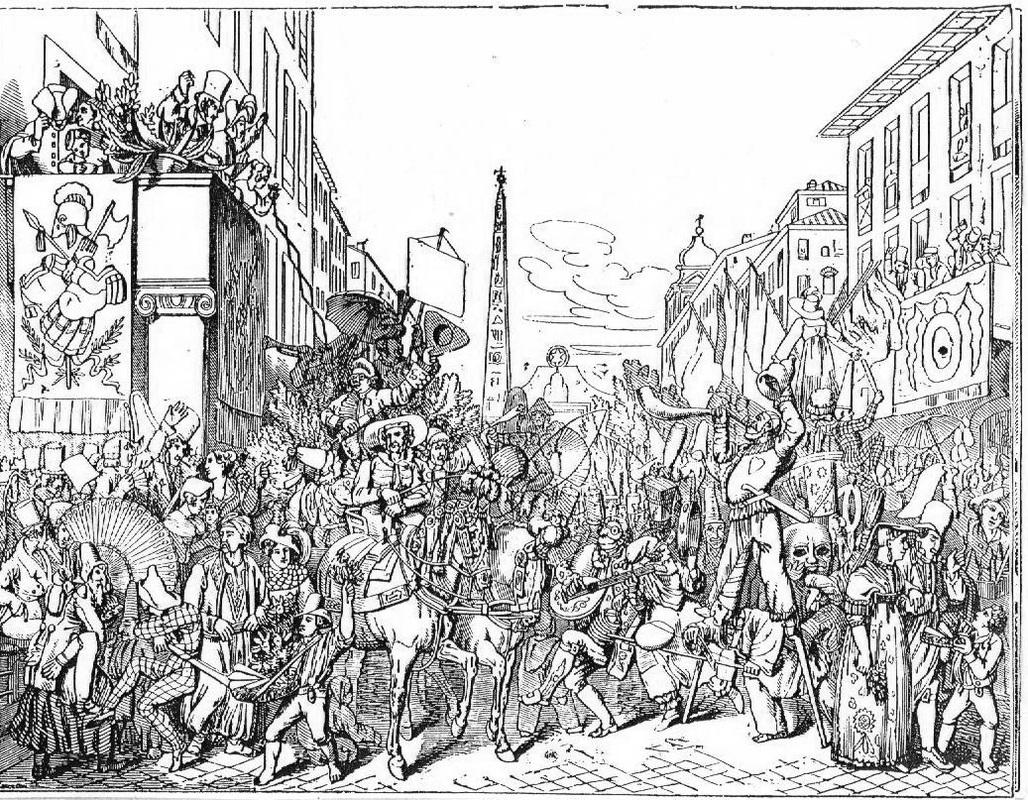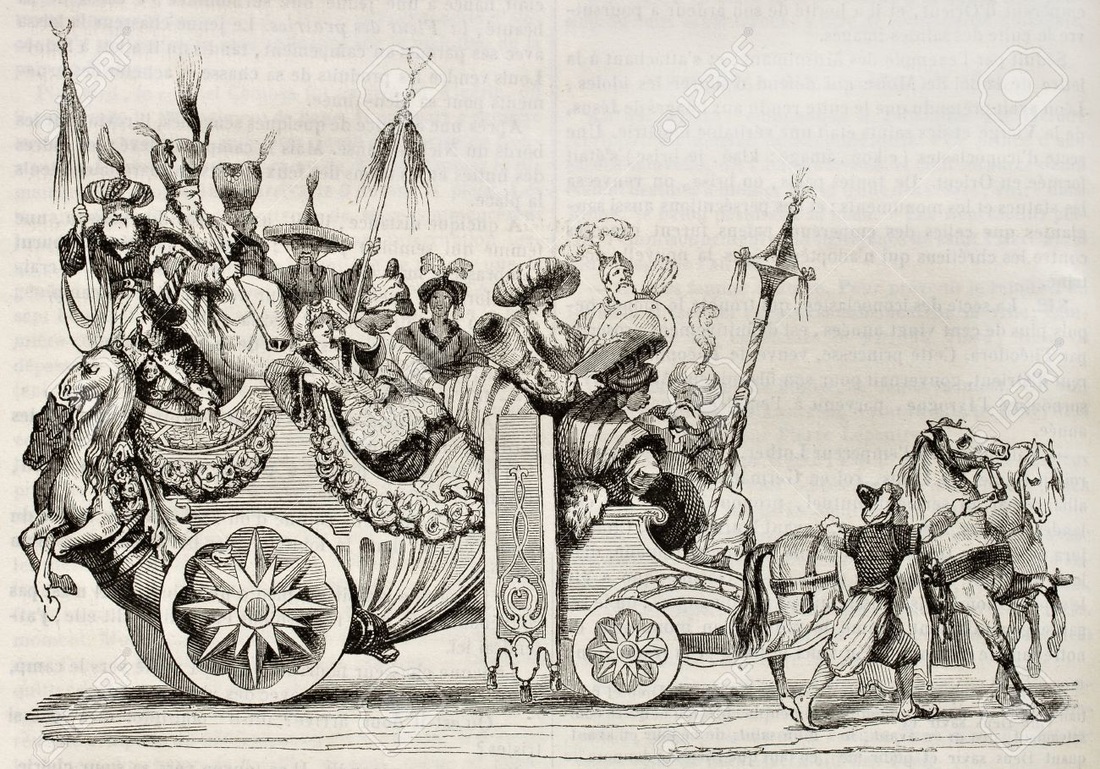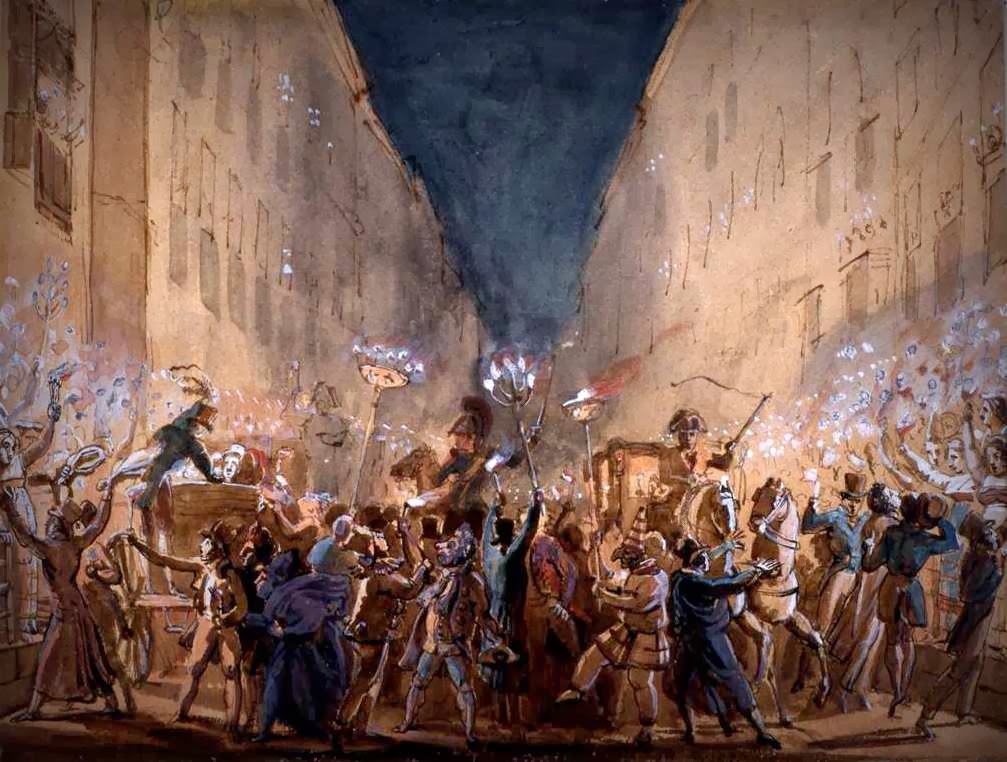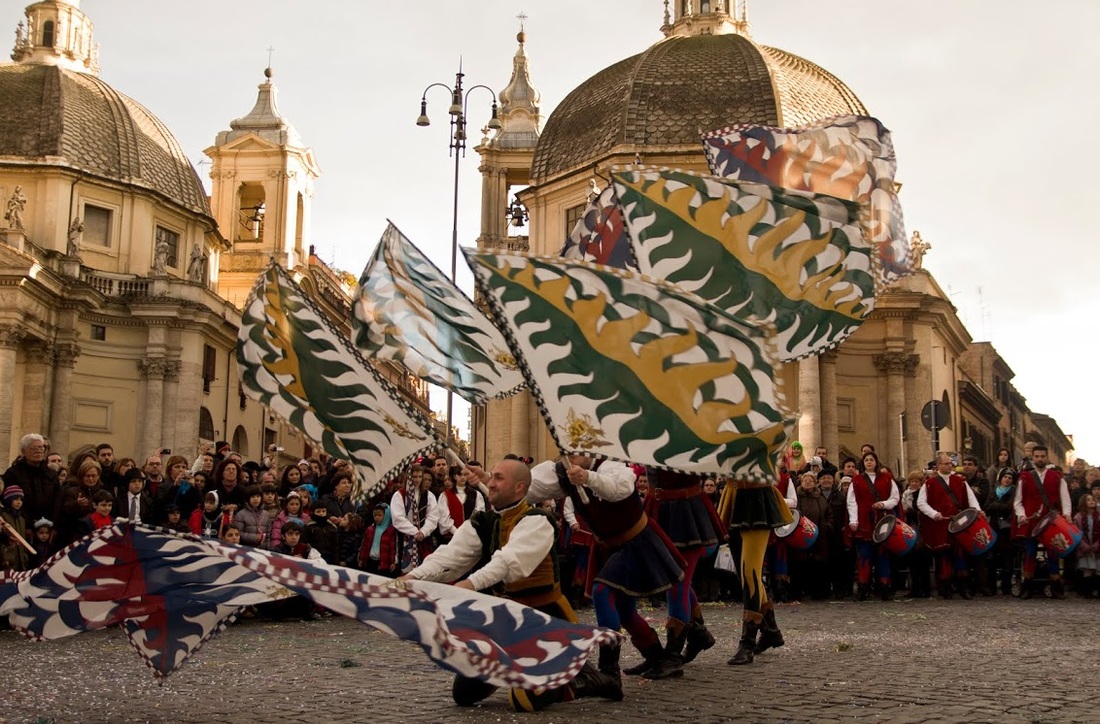Using the word "event" is probably not the best way to talk about the Roman Carnival because, until the 17th century, it lasted for a long period that was extended, more or less, to the whole winter. Yes, during centuries of pope's reign, Carnival started already on the famous "twelfth night", the 6 of January, and ended on the night of the Fat Tuesday, just before the beginning of Lent, the period of 40 days of fasting and rigors before Easter.
|
"Carnival", today, means Rio or Venice, certainly not Rome. Though this celebration was born in the ancient Rome and the Roman Carnival was, until almost the end of the 19th century, one of the most spectacular events in the world. Using the word "event" is probably not the best way to talk about the Roman Carnival because, until the 17th century, it lasted for a long period that was extended, more or less, to the whole winter. Yes, during centuries of pope's reign, Carnival started already on the famous "twelfth night", the 6 of January, and ended on the night of the Fat Tuesday, just before the beginning of Lent, the period of 40 days of fasting and rigors before Easter. The Carnival, which the name comes probably from Latin "carrum navalis" that means "float shaped like a ship", as they were used for this festival or, according to other opinions, from "carnem levare" ("take away the meat" that happens at the end of the festival), is the Christian version of a very old tradition, from an immemorial time: the humans were afraid to see the sun disappear a bit more every day until the winter's solstice and than, the frightening phenomena was inverted and the hope could come back. That fear was also the origin of the old roman festival "Saturnalia" that was celebrated from the 17th to the 23d of December, the last month of the roman year, in honor of Saturn (Cronus for the Greeks). He was not only the terrifying pagan divinity who devoured his own children, but he was also the god of sowing, and the king of a mythic "golden age". The "Saturnalia" was a festival of light, in the middle of the winter. Exactly like, a few centuries later, when the "Carnevale" was celebrated all along the via del Corso, the urban stretch of the old roman Flaminia that ends in the hearth of Rome and that remains even now "the" central street of Rome. Via del Corso (called before "via Lata") was the theatre of battles between the "moccoletti ", the candles that everybody handled trying to blow out the other candles and maintain their owns lighted and battles of "confetti", little candies at the origin and, later, tiny chalk balls. Invaded by horse races and masquerade balls, with many masks from the Commedia dell'Arte, as Pulcinella or the more roman Meo Patacca or Rugantino. During the festival, the roles were reversed (like during the Saturnalia, where the slaves were served by their masters) and the rules didn’t exist, in a sort of copy of the old Roman's "libertas dicembri ". These lasts years the old tradition is coming back. For the Roman Carnival 2017, via del Corso will be again, with the whole “centro storico” , from the Piazza del Popolo to Piazza di Spagna and Piazza Navona an opened air theater with clowns, float parade, music and confetti (no more chalk but paper!) during the whole month of February. And, as the majority of Romans live now in the suburbs and no more in the center of Rome, the biggest parades, on Sunday 26 February and on “Fat Tuesday” (28 February), will take place via Tiburtina, between Portanaccio and Casal Bruciato, in front of the famous cinema studios “De Paolis”. So, an old tradition that seemed forgotten, like nature, is reborn.
|
Archives
December 2019
|
